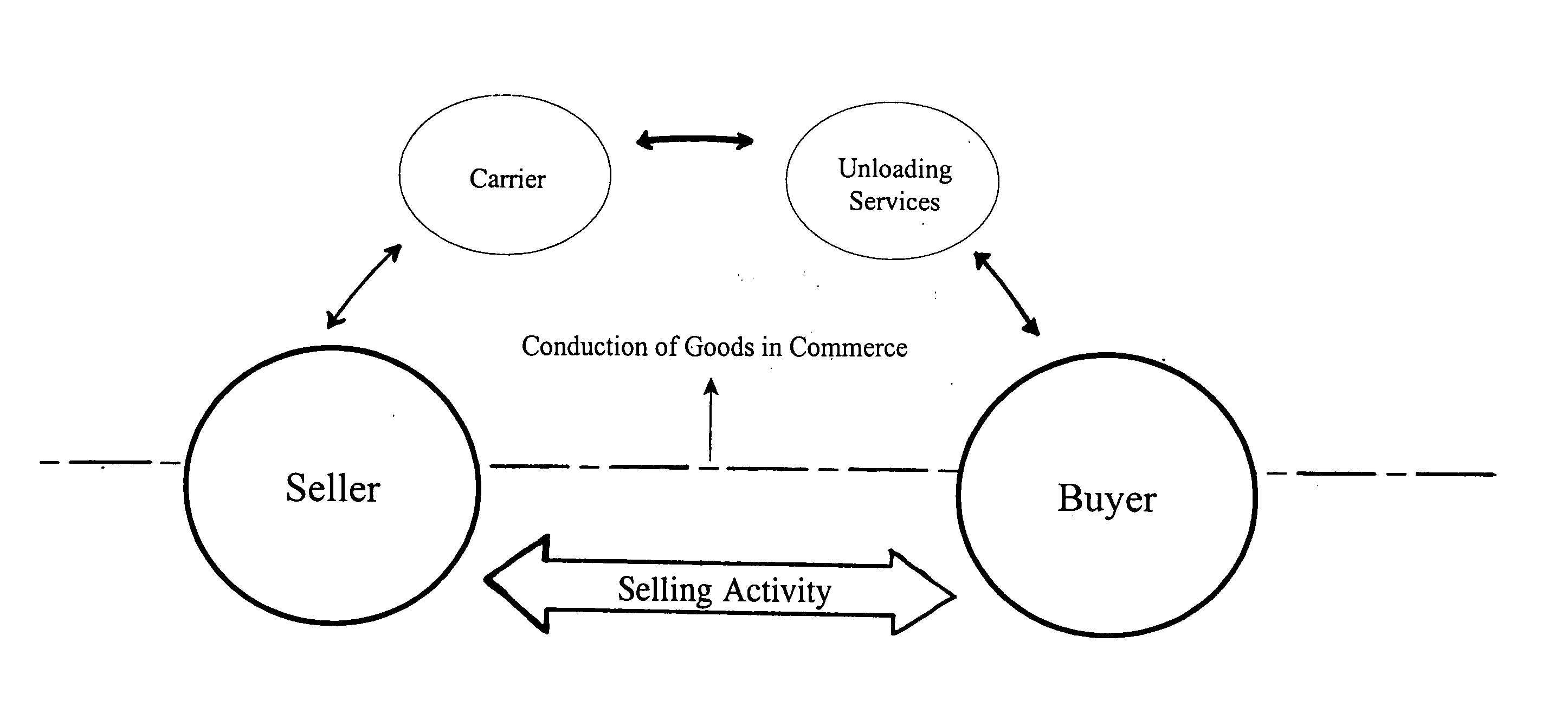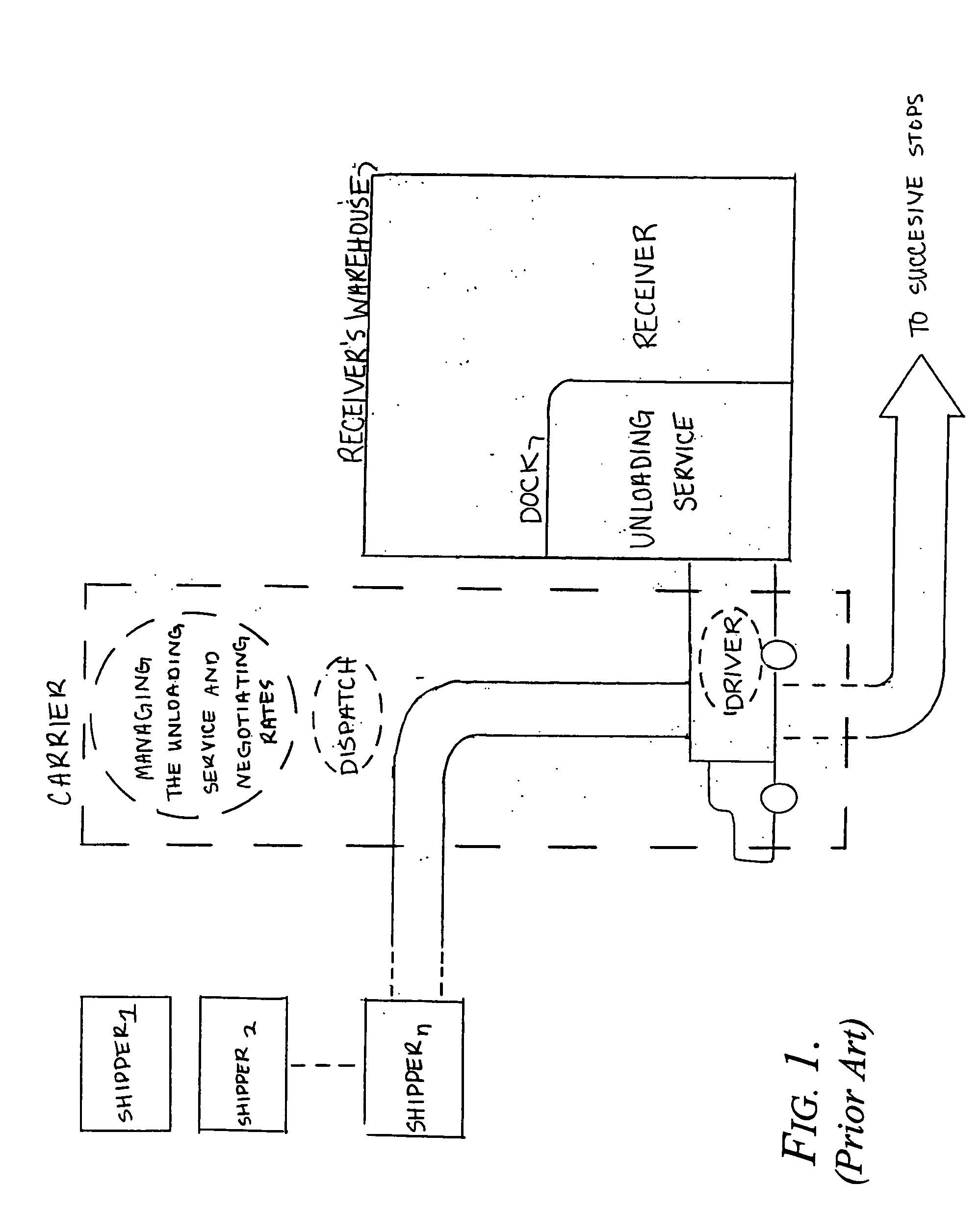Truck-trailer unloading services management system and method
a management system and truck-trailer technology, applied in the field of goods production, can solve the problems of increasing the cost of goods, not making reasonable decent profits, and introducing all kinds of inefficiencies to the system
- Summary
- Abstract
- Description
- Claims
- Application Information
AI Technical Summary
Benefits of technology
Problems solved by technology
Method used
Image
Examples
Embodiment Construction
[0044]FIG. 2 shows a truck-trailer unloading services management system and method 10 in accordance with the invention. An initial policy to be implemented for curbing these costs is to outsource the carriers' role in managing the unloading and / or negotiating the rates for the service. At the dock, the driver's main interest is to beat the clock and get his or her truck back on the road. Therefore, he or she does not have a vested interest in obtaining a fair price for the unloading process and consequently is more likely to accept unreasonable fees just to get the product unloaded as fast as possible. Removing the drivers from the equation allows the carriers to concentrate on their core competency of transporting product for their customers.
[0045] Another policy to be implemented is the establishment of fair, consistent pricing for unloading services. These rates are to be set in a way that helps the shippers and receivers keep their costs under control while allowing the unloade...
PUM
 Login to View More
Login to View More Abstract
Description
Claims
Application Information
 Login to View More
Login to View More - R&D
- Intellectual Property
- Life Sciences
- Materials
- Tech Scout
- Unparalleled Data Quality
- Higher Quality Content
- 60% Fewer Hallucinations
Browse by: Latest US Patents, China's latest patents, Technical Efficacy Thesaurus, Application Domain, Technology Topic, Popular Technical Reports.
© 2025 PatSnap. All rights reserved.Legal|Privacy policy|Modern Slavery Act Transparency Statement|Sitemap|About US| Contact US: help@patsnap.com



